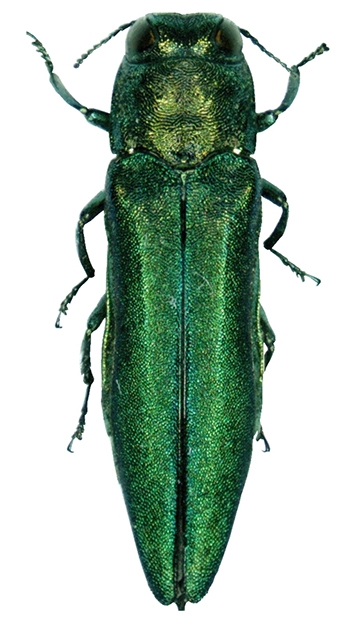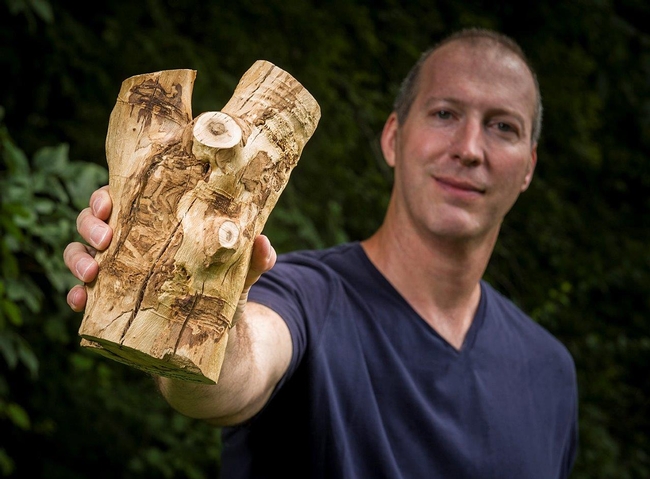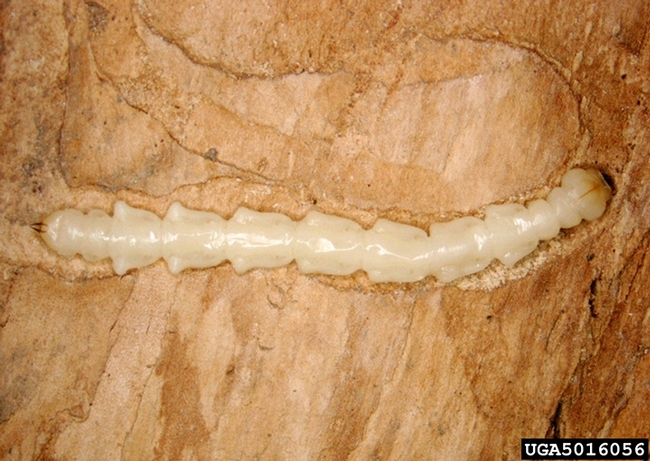
The jewel beetle engages in host shifting. It's been detected in two non-ash species: the white fringetree and an olive tree species in research led by Don Cipollini, professor of biology in the Department of Biological Sciences, Wright State University, Dayton, Ohio.
Cipollini will share his expertise on the emerald ash borer, Agrilus planipennis, when he addresses a UC Davis Department of Entomology and Nematology seminar on Wednesday, Nov. 13.
His hour-long seminar, titled "The Potential for Host Switching via Ecological Fitting in the Emerald Ash Borer-Host Plant System," starts at 4:10 p.m. in 122 Briggs Hall, off Kleiber Hall Drive.
"The traits used by phytophagous insects to find and utilize their ancestral hosts can lead to host range expansions, generally to closely related hosts that share visual and chemical features with ancestral hosts," Cipollini says in his abstract. "Host range expansions often result from ecological fitting, which is the process whereby organisms colonize and persist in novel environments, use novel resources, or form novel associations with other species because of the suites of traits that they carry at the time they encounter the novel environment."
Cipollini will discuss "the potential and constraints on host switching via ecological fitting."
"Once thought of as an ash (Fraxinus spp.) tree specialist, recent studies have revealed a broader potential host range than was expected for this insect," Cipollini says. "I will discuss the demonstrated host-use capabilities of this beetle, as well as the potential for and barriers to the adoption of additional hosts by this beetle."
"We place our observations in the context of biochemical mechanisms that mediate the interactions of these beetles with their host plants, and discuss whether evolutionary host shifts are a possible outcome of the interaction of this insect with novel hosts."
In research published in the Journal of Economic Entomology in May 2017, lead author Cipollini and fellow researchers at Wright State University detailed how the emerald ash borer can develop from larvae to adulthood on a species of olive tree. They also published a piece in entomologytoday.org.
The emerald ash borer lays its eggs in bark crevices, primarily ash trees, and its larvae feed beneath the bark. In the United States, its core population centers around Michigan and surrounding states.
Attached Images:

Wright State biology professor Don Cipollini earlier discovered that the emerald green ash borer targets the white fringetree, Chionanthus virginicus, native to the savannas and lowlands of the southeastern United States. Later he and fellow researchers discovered it also infests an olive tree species. (Photo by Chris Snyder)

Larva of the emerald ash borer, Agrilus planipennis. (Photo courtesy of Pennsylvania Department of Conservation and Natural Resources)